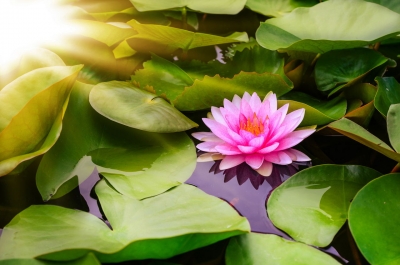Lotus is the national flower of which country?

Lotus is the National Flower of India. It is a sacred flower and occupies a unique position in the art and mythology of ancient India and has been an auspicious symbol of Indian culture since time immemorial.
Basically an aquatic flower, lotus holds a great significance in Indian history. There is hardly any painting or sculpture that doesn’t emphasis the beauty of the lotus flower. Growing in lakes and ponds, this sacred flower occupies a significant position in the mythology of ancient India. In the Hindu holy book – Bhagavad Gita, the lotus flower has been used as a metaphor for detachment. This is because lotus grows in muddy waters and remains untouched. The flower also symbolises beauty and knowledge as Saraswati – the Goddess of Learning is portrayed as seated on it.
Lotus plants are adapted to grow in the flood plains of slow-moving rivers and delta areas. Stands of lotus drop hundreds of thousands of seeds every year to the bottom of the pond. While some sprout immediately, and most are eaten by wildlife, the remaining seeds can remain dormant for an extensive period of time as the pond silts in and dries out. During flood conditions, sediments containing these seeds are broken open, and the dormant seeds rehydrate and begin a new lotus colony. Under favorable circumstances the seeds of this aquatic perennial may remain viable for many years, with the oldest recorded lotus germination being from seeds 1,300 years old recovered from a dry lakebed in northeastern China.
Picture Credit : Google